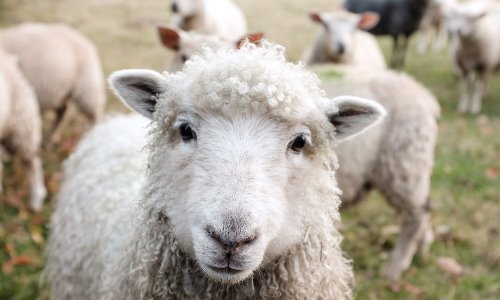
Wool-Free Winters
Just like the dairy industry, the wool industry uses animals as machines created to produce something profitable. Sheep are genetically modified to produce more wool than they are meant to. Their wool is meant to protect them from extreme temperatures.
Shearers are encouraged to work fast as their pay is based on volume. Sheep are constantly injured due to fast-paced careless shearing, sometimes losing tails and ears. Wounds are sewn shut with no pain-relief. Sheep are often tortured and abused by shearers, and living in unsanitary conditions. Not long after being born, lambs have their tails cut off, their ears hole-punched, and if they are males, they are castrated.
Sheep are gentle beings just like cows that feel pain, suffering, and fear. Rabbits, goats, and alpacas are used for wool as well. An investigation at an angora rabbit farm even caused H&M to drop angora completely.
Merinos are the most common sheep to be bred in Australia. They have wrinkly skin that produces more wool. The wrinkles trap moisture and urine, which can cause flies and maggots to harvest in the folds of the skin. To prevent this, there is a procedure called mulesing. To make the skin smooth, they cut off huge portions of skin.
Rather than supporting the wool industry, some other options are wood wool, wire wool, cotton, polyester, bamboo, acrylic, nylon, and other synthetic materials. Products that contain wool include angora, carpets, cashmere, felt, tweed, and yarn. Although its getting cold outside, there are plenty of ways to bundle up and stay warm without using wool.
